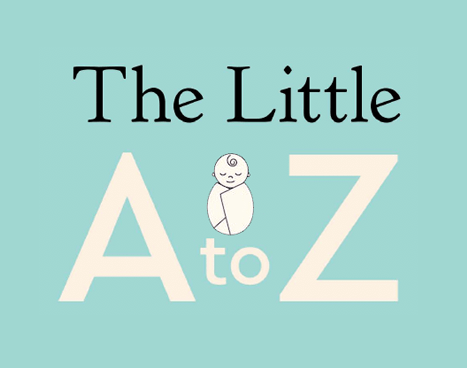Blog Layout
Breaking the Mold, Part 3
Rachel Perks • Jun 07, 2021
Equitable life satisfaction is the goal

Last week we rounded out an exploration of Lotte Bailyn’s book, Breaking the Mold. Our discussion explored the dramatic changes to America’s workforce starting in the 1970s that has ushered in a variety of corporate experiments in flexibility policies. For those who did not get a chance to read the first two parts of this newsletter series, you can find them archived on my website.
An important conclusion offered by Bailyn’s book is that flexibility policies, alongside other approaches intending to help employees achieve better work-life balance, should be part of an organisation’s endeavor to create equitable life satisfaction for all its employees. For as we saw in both Part 1 and Part of our Breaking the Mold newsletter series, historically, though well-intentioned, flex policies have largely been taken up by women, creating a ‘second track’ for female career development.
Beyond flex policies, Bailyn argues for a comprehensive new management style, one moving away from practices of control over the way in which individuals organize their day-to-day and centered on rewarding excessive face-time in the office towards a style awarding trust to individuals, allowing them to make decisions on how to allocate time to tasks, and focusing on evaluating results. Such a performance model should be possible to achieve, whether in the office or working from home. Yet, despite increasing demand from younger work generations for more autonomy and flexibility, corporate America has been rather slow on the uptake of such new definitions of the optimal worker and the management practices that would accompany it. We concluded last week by wondering how, as a result of COVID-19, the tide might be turning.
There is no doubt that COVID-19 accelerated beyond our wildest imaginations the possibility for remote, more independent work. Indeed, for academics like Bailyn, COVID-19 has enabled the largest workforce experiment in the types of policies and practices she’s spent her career advocating for. In the majority of white collar institutions, the lockdowns of spring 2020 forced every employee to participate in remote work. Even when controlling for variables such as child care, homeschooling, and other domestic responsibilities, early evidence suggests that productivity (an important performance indicator for employers) has remained the same, if not increased. In fact, it is being widely agreed now that people are performing better from home —a result which echoes some of the early corporate trials in remote work that Bailyn studied in the 1990s. An important factor in these success stories —whether today or in the 1990s— is the ability of individuals to control the use of their time. With this autonomy comes freedom to re-imagine how the day-to-day can be organized to fulfill satisfactorily personal and public responsibilities.
In light of these early, positive WFH results since spring 2020, it’s been confusing to see over the last few weeks CEO edicts “to return to the office.” Their rallying calls to employees to return in person to office buildings signals to the outside world that the last 16 months have been simply a bump in the great corporate America road well-travelled. It is hard to square these executives’ orders ‘to return’ with a whole range of articles suggesting that any employer who is looking to retain and draw new intellectual talent in this post COVID-19 era is going to have to earnestly compete— with generous flex policies and ‘perks’ reflective of the new work culture that has emerged during the crisis. In the words of Joshua Chaffin, “At stake are competing visions of the workplace of the future, and the degree of flexibility that workers should have in deciding and where and how to work.” One writer went further to call this emerging tension between employers and employees as the new ‘class warfare.’ Or as Andrew Hill of the Financial Times recently wrote, “The central paradox is that the best way of encouraging people to return may be to give them the freedom not to.”
A compromise emerging is that of the hybrid work model in which staff can spend a certain number of days a week at home and the remainder in the office. Tech giants Google and IBM already predict, based on staff surveys, that 60% and 80%, respectively, of their workforce will adopt a hybrid model. Accenture recently found 83% of survey respondents in favor of a hybrid model. Yesterday I expressed my own preference in an institutional survey (I voted for 2 days in and 3 days at home). In essence, the hybrid model should allow staff to spend some days working face-to-face with colleagues in the office while the rest at home. The beauty of this, or any model, would be in employees’ ability to choose, thereby reinforcing the values of autonomy and freedom we are seeking to build in our organizations.
Even here however some employers seem to think they still can manage through control. It’s been disheartening to read of companies who will restrict the specific days staff can work from home (hint: no Mondays or Fridays from home). Or of others who worry that prolonged WFH, even in a hybrid form, will negatively impact ‘collaboration’ amongst team members. Given the by-and-large huge success we’ve had with the WFH experiment, such statements cannot help but appear to be stoned-deaf. It would almost suggest that traditional corporate cultures simply do not want to change.
Luckily a few companies are listening. In response to overwhelming demand to remain permanently working from home, one firm is trialling ‘off site’ inspirational work spots (like retreats minus those awkward trust games) where staff will get together every few months to collaborate. The destination is not disclosed until quite close to the time to create a sense of fun and anticipation. Other companies are looking into shared office spaces nearer to staff homes so they don’t have to commute as far but still be able to get out of the house and enjoy some human interaction. Others are looking to new types of perks which focus less on incentives to keep people at work (free food, gyms, in-house dry cleaning, etc) and more centered on well-being (subsidies for sports near your home, financial planning, and a diversity of leave days to volunteer, attend children’s events, and decompress)
I for one look forward to my downtown coffee ritual as I walk to my office, swipe my badge at security, and settle into my chair. I like the bustle of downtown. I miss my yoga studio. But I also cherish the short commute to my “home office,” the freedom with which I can break up my day with dog walks and school pick of my son, and to return to my computer later in the evening. As I was writing this week’s piece, I realised, truth be told, most of those daily balance moments for me do not hinge on office versus WFH. More important is the culture of the organization, and the understanding it has of its employees being people with personal commitments and lives outside the 9-5.
So if you are like me, preparing for some hybrid model starting September 2021, take a moment to reflect on what you have loved and hated about working from home. Put it down on paper. Imagine how in an all-out return or a hybrid model, you could safeguard those precious touch points in your day that bring you joy and satisfaction. Tape them to your computer monitor. Recite them in front of the mirror. So that when your manager asks you what you want to do (because inevitably they will) you are prepared with your non-negotiable(s). I suspect, contrary to the executive-order style we have seen recently, that a good number of organizations see there is no blanket going back.
This is the time to break the mold, in order to seize that equitable life satisfaction Bailyn firmly believed in.
Share
Tweet
Share
Mail









